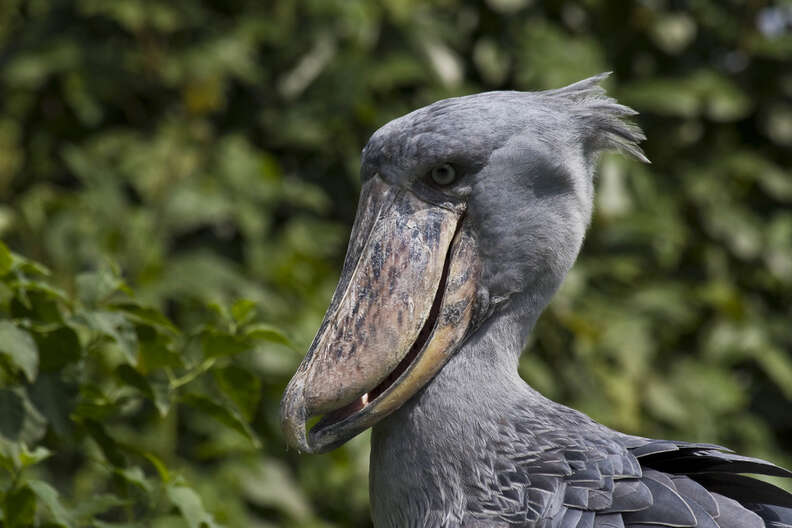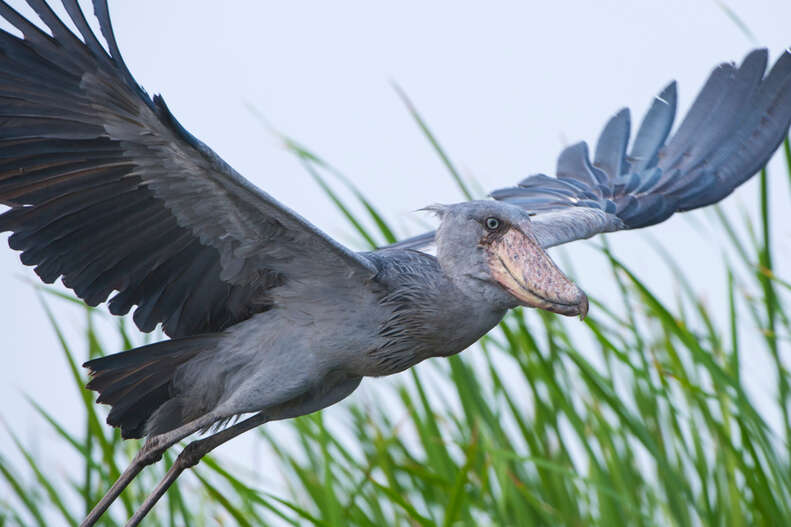Boasting a wingspan close to four feet, it’s understandable why some people might confuse this otherworldly bird with a mechanical device.

The shoe-billed stork has a comical appearance with its yellow-green eyes and large bill shaped like a shoe. Its head moves in quick, robotic jerks as it looks around. These storks can be found in the marshy habitats of East Africa’s tropical swamps, where they wait for hours at the water’s edge to catch their favorite fish.

The shoebill birds are quite fascinating, with their old-fashioned appearance and amiable disposition. However, they have a reputation for preying on baby crocodiles and large monitor lizards. These birds tend to remain motionless for extended periods each day, patiently waiting for their next meal to cross their path. Though they are typically silent animals, shoebills will occasionally clap their bills together as a greeting to other birds or to communicate with their offspring.

The shoebill bird is often referred to as the “king of the marshes” due to its impressive size and unique appearance, which includes a massive bill. With a wingspan that can reach over 8 feet, these birds are able to fly short distances despite their large stature. It’s easy to see why these giants are so captivating, with their distinctive features and unwavering persistence in hunting for food. Interestingly, even the ancient Egyptians revered these birds and featured them in their artwork.

In the past few decades, the population of majestic shoebill birds has been declining due to damage to their habitat caused by oil exploration and agricultural development. Moreover, these birds are vulnerable to being trapped in the wild and sold in the illegal bird trade or kept in zoos. According to researchers, shoebills are desirable birds, but their lack of reproductive success in captivity puts pressure on the wild population to meet commercial demands. The conservation strategy highlights that previous exports of shoebills have resulted in substantial mortality during capture, transportation, and imprisonment. Only two zoos have successfully produced chicks in 2008 and 2009. This implies that captive populations cannot sustain themselves and must rely on wild birds to remain viable.
